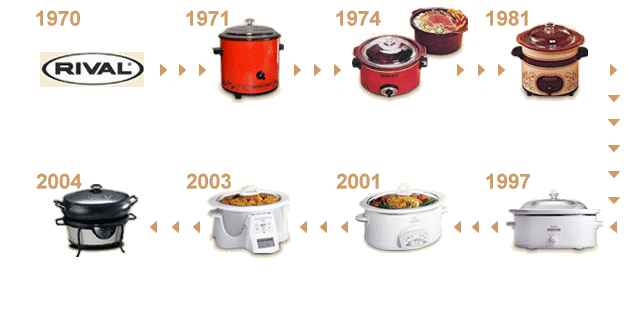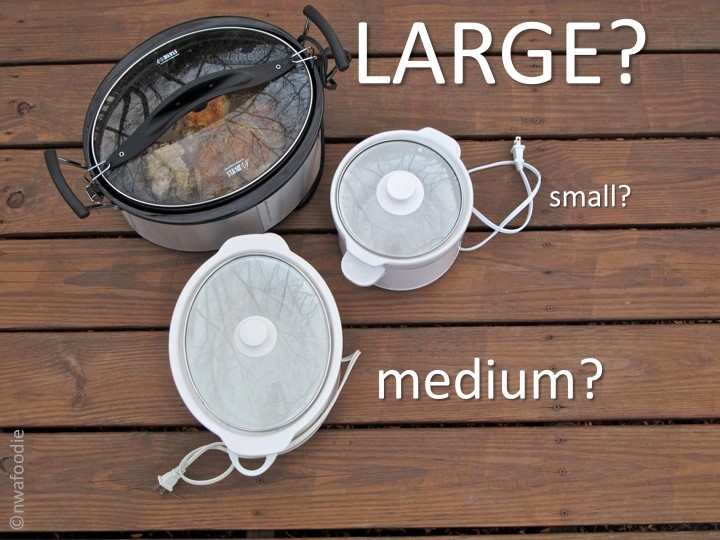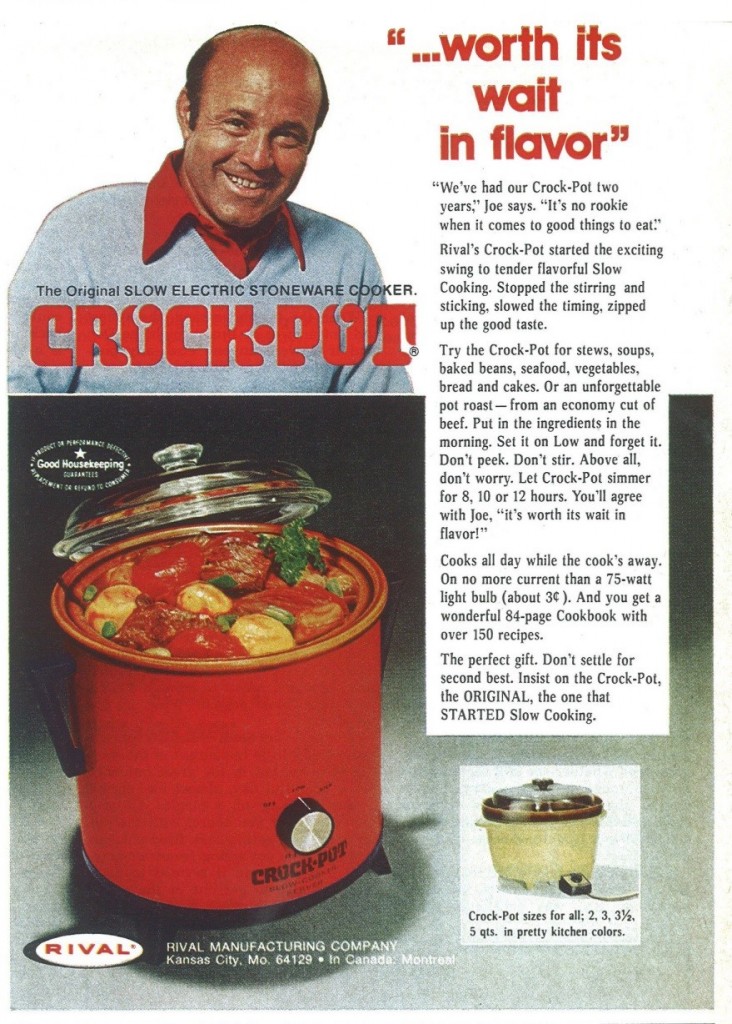My first slow cooker was a Rival Crock-Pot, a name synonymous with slow cookers, and looked much like this one. Only mine was avocado green. If you’re in my age group, you’ll remember the days when we colored our world with harvest gold and avocado green and our slow cookers had crocks that could not be removed and, therefore, were difficult to clean.
However, America fell in love with the slow cooker for its convenience, energy efficiency and cost effectiveness. Crock-Pot sold about 80,000 units in 1972, exploded to around 3.7 million units in 1975, and then tapered down to nearly 1.3 million units once copy-cats entered the market. As of 2002, a study from the Betty Crocker Kitchens reported that almost 81 percent of U.S. homes owned a slow cooker.
Today, slow cookers come in a wide variety of colors, styles, sizes and quality. Presently, I own four in a range of sizes, none of them expensive models. Clearly, the higher-end models have their advantages especially with the stabilization of how the heat is distributed. Higher-end, of course, equates to higher cost, but it may also equate to added convenience with programmable features.

Due to food safety concerns, slow cookers now heat up faster and cook at higher temperatures than those of the early years. The author of Art of the Slow Cooker, Andrew Schloss (Chronicle, 2008), says you can expect to reach a temperature of 185 to 200 degrees on LOW, while it’s common to reach 250 to 300 degrees on HIGH. Therefore, you should expect newer cookers to outperform older cookers.
It’s easy to convert a traditional recipe to one for a slow cooker. Generally, for every 30 minutes of traditional cooking time, cook one hour on HIGH or two hours on LOW in a slow cooker.
The real key is to get to know your slow cooker, because they don’t all cook the same. One cooker’s hot spot is another one’s cool spot.
 Photo courtesy of nwafoodie
Photo courtesy of nwafoodie
Which slow cooker should you choose?
1. Observe how it cooks. Cooking times will vary among different models. They may even depend upon the amount of power that is distributed to your home.
2. Give it a stir. Because hot spots occur even with the more expensive models, it’s a good idea to give the contents in your cooker a stir now and then. This is more important depending upon the thicker consistency of the contents.
3. Choose the correct size and shape. A 1 ½- or 2-quart model is useful if you’re cooking for one or making dips or appetizers. It’s also handy to use for a few cups of spiced beverages or home fragrances. However, it obviously isn’t the choice for a big pot of stew or chili. For chili, soup, stew or beans (which I do not presoak), I like to use a 5-quart round model. If you have a large family, opt for at least a 6- or 7-quart version. An oval model will handle a large cut of meat, usually without cutting and provides more surface area.
4. Make sure the model you purchase has a comprehensive manufacturer’s instruction manual. Do yourself a favor and read it.
 Arkansas Women Blogger member and co-administrator Debbie Arnold pontificates and eats at Dining With Debbie. She and her Hubby split their time between Central and Northwest Arkansas. She loves to cook, develop recipes and have play dates with her two perfect grands. Mostly, she has play dates with the Perfect Ones.
Arkansas Women Blogger member and co-administrator Debbie Arnold pontificates and eats at Dining With Debbie. She and her Hubby split their time between Central and Northwest Arkansas. She loves to cook, develop recipes and have play dates with her two perfect grands. Mostly, she has play dates with the Perfect Ones.

